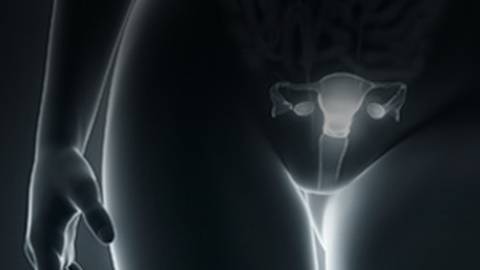
The Diagnosis of AUB: Causes and the Emerging Diagnostic Option
PROGRAM 1:
A New and Better Standard of Care Than Blind Biopsy for the Diagnosis of Abnormal Uterine Bleeding1
Host: Andrea J. Singer, MD
Guest: Steven R. Goldstein, MD
Recent advances in technology are significantly changing the way physicians evaluate patients with abnormal uterine bleeding (AUB).
Overview
Recent advances in technology are significantly changing the way physicians evaluate patients with abnormal uterine bleeding (AUB). Clinicians must understand the gravity of abnormal uterine bleeding in terms of patient health. One-third of patient visits to the gynecologist are for abnormal bleeding – accounting for more than 70% of gynecologic consults in perimenopausal and postmenopausal women. For younger women between ages 19 and 39, abnormal bleeding most frequently occurs as a result of pregnancy, benign structural lesions, anovulatory cycles in polycystic ovarian syndrome, abnormalities of hormonal contraception, and occasionally even endometrial hyperplasia2.
Join host Dr. Andrea Singer as she welcomes Dr. Steven R. Goldstein to discuss AUB and Endosee®, and in-office diagnostic hysteroscopy. Dr. Goldstein is a Professor of Obstetrics and Gynecology at the New York University School of Medicine, immediate Past President of the American Institute of Ultrasound in Medicine, and a clinical practitioner in the Faculty Practice Suites at New York University.

PROGRAM 2:
Abnormal Uterine Bleeding (AUB): Impact of Direct Visualization for Earlier Diagnosis

Host Renée Simone Yolanda Allen, MD, MHSc., FACOG
Guest Abigail Feathers, MD
Guest Kevin J. Lee, MD, MSPH, FACOG
Guest Stephen M. Volin, MD
Endometrial biopsy (EMB) has limitations in diagnosing abnormalities within the uterine cavity. If cancer occupies less than 50% of the surface area of the endometrial cavity, the cancer can be missed by a blind EMB alone2.
Overview
Endometrial biopsy (EMB) has limitations in diagnosing abnormalities within the uterine cavity. If cancer occupies less than 50% of the surface area of the endometrial cavity, the cancer can be missed by a blind EMB alone. And, EMB alone could potentially miss the diagnosis of focal lesions in up to 18% of patients3. In this first discussion of a 2-part series, experts will be discussing the benefits of direct visualization of the uterine cavity at the point-of-care and its benefits to both you and your patients.
Host Dr. Renee Allen welcomes:
- Abigail Feathers, MD, Fellow of the American College of Obstetricians and Gynecologists (FACOG) and practicing gynecologist at Garrett Regional Medical Center, Oakland, MD.
- Kevin J. Lee, MD, MSPH, FACOG, practices minimally invasive gynecology and gynecologic endoscopy in Baltimore, MD. Dr. Lee has particular expertise and interest in uterine fibroids, abnormal uterine bleeding, pelvic pain, endometriosis, and health disparities.
- Stephen M. Volin, MD, founder and managing physician with The Women’s Health Group and the Colorado Pelvic Floor and Incontinence Center, instructor with the University of Colorado School of Medicine and Rocky Vista University

PROGRAM 3:
Endosee®: Changing the Work Up of Abnormal Uterine Bleeding (AUB)

Host Renée Simone Yolanda Allen, MD, MHSc., FACOG
Guest Abigail Feathers, MD
Guest Kevin J. Lee, MD, MSPH, FACOG
Guest Stephen M. Volin, MD
In this second discussion of a 2-part series, host Dr. Renee Allen welcomes back gynecologic experts as they discuss “Endosee®: Changing the Work Up of Abnormal Uterine Bleeding (AUB)1,4,5.”
Overview
In this second discussion of a 2-part series, host Dr. Renee Allen welcomes back gynecologic experts as they discuss “Endosee: Changing the Work Up of Abnormal Uterine Bleeding (AUB)1,4,5.” They will review their experience on how Endosee benefits their individual practices, the benefits to their patients, and the overall healthcare system. Our medical guest experts are Dr. Abigail Feathers, solo practitioner, Medical and Surgical Gynecologist in Oakland, Maryland; Dr. Kevin J. Lee, minimally invasive GYN surgeon at MedStar Medical Group Women’s Health at MedStar Good Samaritan Hospital in Baltimore, Maryland; and Dr. Stephen M. Volin, founder and managing partner of the Women’s Health Group in Denver, Colorado.
References
- Goldstein SR. Finding a Better Approach to Diagnosing Abnormal Uterine Bleeding; Supplement to OBG Management; Nov 2016.
- ACOG Practice Bulletin, Diagnosis of Abnormal Uterine Bleeding in Reproductive-Aged Women, Number 128. July 2012.
- Guido RS, Kanbour-Shakir A, Rulin MC, Christopherson WA. Pipelle endometrial sampling. Sensitivity in the detection of endometrial cancer. J Reprod Med. 1995;40(8):553-555.
- Goldstein E. Best Practices: Advantages of in-office hysteroscopy in the diagnosis of abnormal uterine bleeding with Endosee. OB Gyn News Supplement; 2017.
- ACOG Committee Opinion Number 800. Obstetrics & Gynecology; Volume 135, No. 3, March 2020.

